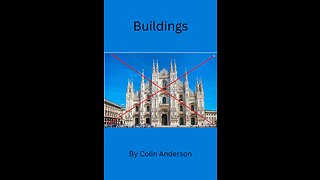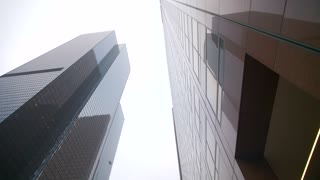Premium Only Content

What are Earthquake-Resistant Buildings
During an earthquake the majority of injuries and deaths occur to people who are trapped in can withstand earthquakes is vitally important.
But is it possible Yes! (Buildings that date back to the sixth century are still standing despite the fact that they're located in earthquake-prone areas. such as the Hagia Sophia in Istanbul Turkey).
In order for a structure to resist the massive power of an earth- quake, it has to withstand the lateral or side-to-side motions earthquakes produce: the vertical motions are accounted for because buildings, by their very design, already counteract the effect of gravity.
The ideal earthquake- resistant building is one that is symmetrical in shape, with little ornamentation, such as cornices or buttresses. SAFER BUILDINGS.
The Tokyo Skytree tower wi Tokys Japan, shown here in the feal sops of comarction, was derged with numerous earthquake-netta festures that could break off during a tremor.
A diaphragm, a middle tier of softer material that allows the building to wobble without breaking, provides side-to-side flexibility.
Cross-bracing helps too by providing vertical stability and shear walls (walls made up of braced panels) provide lateral stability.
Some structures even have frames in which the joints provide stability, yet allow the columns and beams to bend in response to an earthquake's force In addition, some buildings are attached to their found on a system of cylinders or springs.
Lead-rubber bearings are a favorite choice for designers.
A lead core makes the bearing stiff and strong in the vertical direction: alternating layers of rubber and steel bands provide strength horizontally.
A damping system of gel-like pads connected to a heavy weight on top of the building can also help absorb the force of the earthquake.
-
 8:00
8:00
Christian Writings
2 years agoBuildings
2 -
 0:12
0:12
zhaocong
2 years agoHigh-rise buildings
1 -
 0:17
0:17
Revelscenery13
3 years ago $0.59 earnedBuildings
596 -
 1:40:30
1:40:30
I_Came_With_Fire_Podcast
12 hours agoPrivate Military Contractors Are TRAFFICKING KIDS Around The United States
13.3K6 -
 LIVE
LIVE
JdaDelete
13 hours ago $0.63 earnedFinal Fantasy VII Rebirth | Jdub's Journey Part 8 - Corel Prison
260 watching -
 2:39:09
2:39:09
LFA TV
18 hours agoTHE ARK ENCOUNTER LIVE EVENT! 7.26.25 9AM EST-12PM EST
191K23 -
 LIVE
LIVE
Sgt Wilky Plays
3 hours agoTherapeutics with Dr Kong
99 watching -
 1:10:23
1:10:23
Man in America
23 hours agoAre MK-Ultra Parasites Rewiring Your Brain? | Detoxing, Peptides & Parasite Warfare w/ Diane Kazer
32.6K50 -
 LIVE
LIVE
TheSchleppy
23 hours ago $0.47 earned✨TheSchleppy✨24HR 2 YRS ON RUMBLE STREAM! RIGHT INTO RUMBLE HALO EVENT!
60 watching -
 3:08:21
3:08:21
JakRazGaming
4 hours agoPlaying Ghost of Tsushima DIRECTOR'S CUT!! on PS5 Stream 6
10.3K1